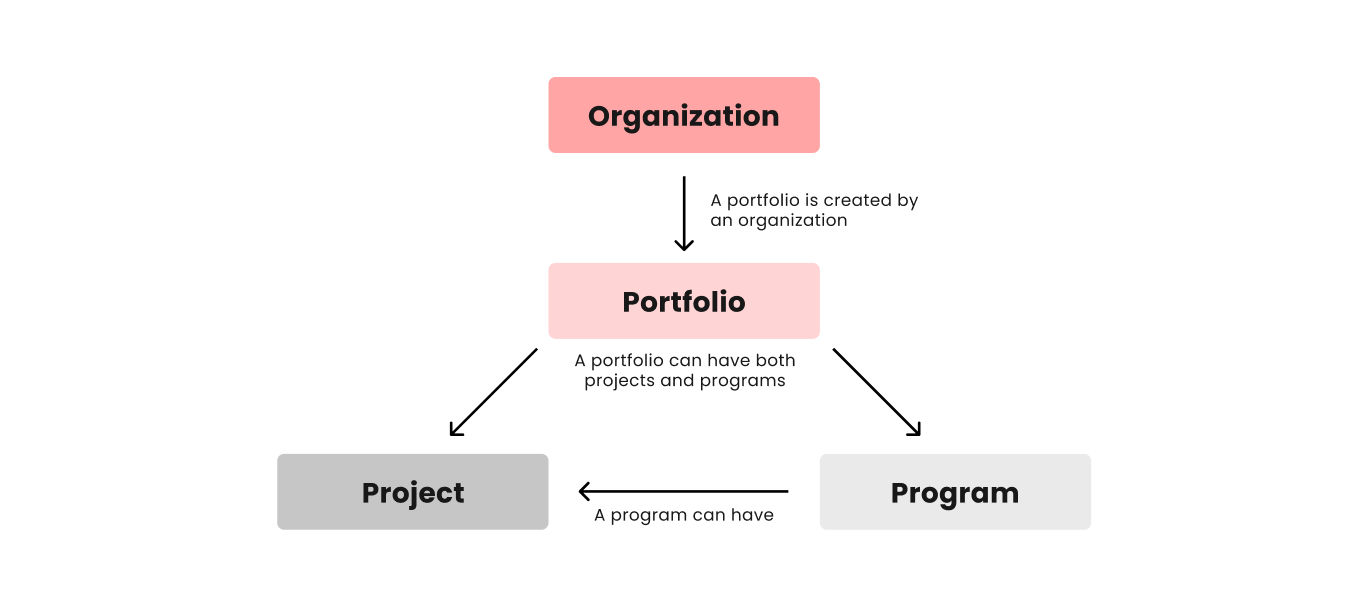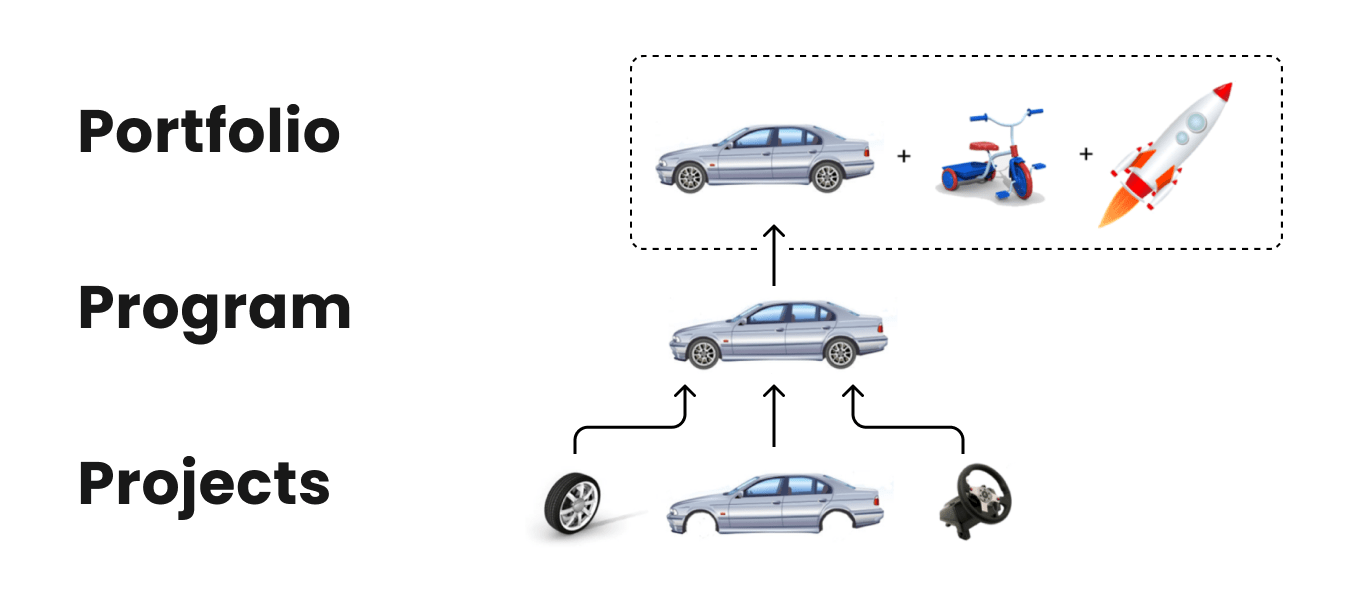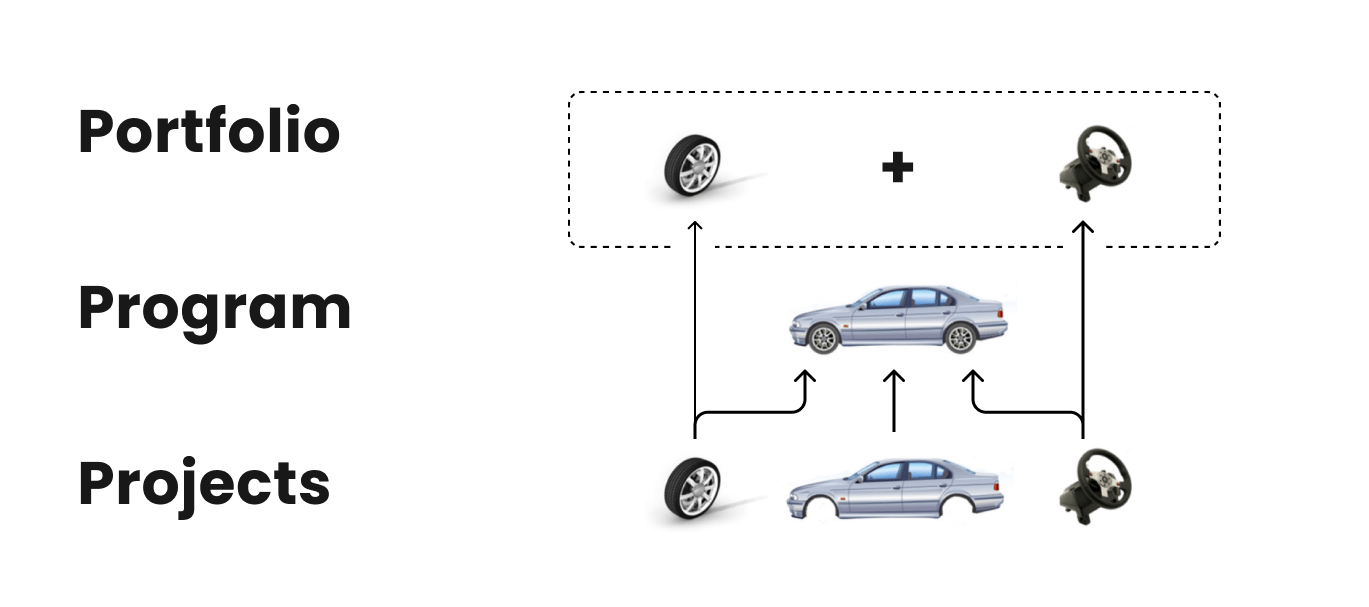Understanding Programs and Portfolios in Project Management
April 14, 2024 · 6 min read
The terms "program" and "portfolio" often get used interchangeably, albeit incorrectly. This article aims to clarify the distinctions between these crucial terms and shed light on their significance for effective project management.
What is a Program?
A program is a collection of elements (not solely projects) that are grouped together because they are better managed in tandem. The essence of a program is its ability to coordinate various projects and activities to achieve a broader objective that might not be attainable if managed independently.

For instance, let's consider a somewhat abstract example to illustrate the point. Imagine a manufacturing company currently engaged in three separate projects: 1) designing a new wheel, 2) developing a new car body, and 3) crafting a new steering wheel. This company is a renowned supplier of car parts.
Suddenly, a proposition emerges within the company's leadership: given the excellence in producing individual car components, why not manufacture a complete car? This suggestion gains unanimous support, necessitating the coordination of these projects to assemble the car.
Thus, the need arises for someone to ensure that the wheel fits into the body frame, that the steering wheel can be installed into the body, and that all components are synchronized to avoid downtime. This initiative to integrate the three projects into a so-called program begins.
Why do we prefer the term "elements" over "projects" in the definition of a program? Because a program can encompass not only projects but also operational activities such as technical support and logistics, which often extend beyond the project's timeframe.
Unlike a project, programs have a goal but no definitive endpoint. They continue until the desired outcomes are achieved, allowing for the addition or removal of projects and operational activities as needed.
What is a Portfolio?
A portfolio, on the other hand, is a group of diverse elements (not only projects) brought together solely based on a strategic principle.
To continue with our manufacturing example, imagine the company produces not only car parts but also refrigerators, microwaves, bicycles, and rockets. Among these products, the company identifies cars, bicycles, and rockets as the most strategically significant for future success. Thus, these areas are consolidated into a portfolio, garnering the primary focus and resources, while the rest are managed as secondary priorities.

Conversely, a company might experiment with a "junk" portfolio filled with less promising projects to explore new ideas, fully prepared to abandon them if necessary.
The key takeaway is that elements within a portfolio are unified by a common strategic goal, such as potential revenue generation, rather than inherent similarities.
Can Projects Be Part of a Portfolio Without Being in a Program?
Absolutely. For example, if the company deems the car project intriguing but not a priority, believing that the majority of profits will continue to come from the production of wheels and steering wheels, then only these projects might be included in the portfolio based on strategic considerations.

Why Should Project Managers Care About Program and Portfolio Management?
First and foremost, project managers often operate within the confines of programs or portfolios, necessitating an understanding of the roles of program or portfolio managers. Often, the manager of a program or portfolio acts as a project sponsor. They are typically responsible for balancing resources and guiding the strategic direction, ensuring alignment with broader organizational goals.
Conclusion
The distinction between programs and portfolios in the project management process is not just a matter of semantics; it represents a fundamental understanding of how projects are grouped, managed, and aligned with strategic objectives. Additionally, understanding the difference between a program manager vs project manager is essential, as it highlights the varied responsibilities and scopes involved in managing multiple projects or overseeing individual initiatives.
For project managers, grasping these concepts is crucial for navigating the complex landscape of modern business projects. It enables them to better understand their role within larger strategic frameworks and to contribute more effectively to the organization's overall success.


